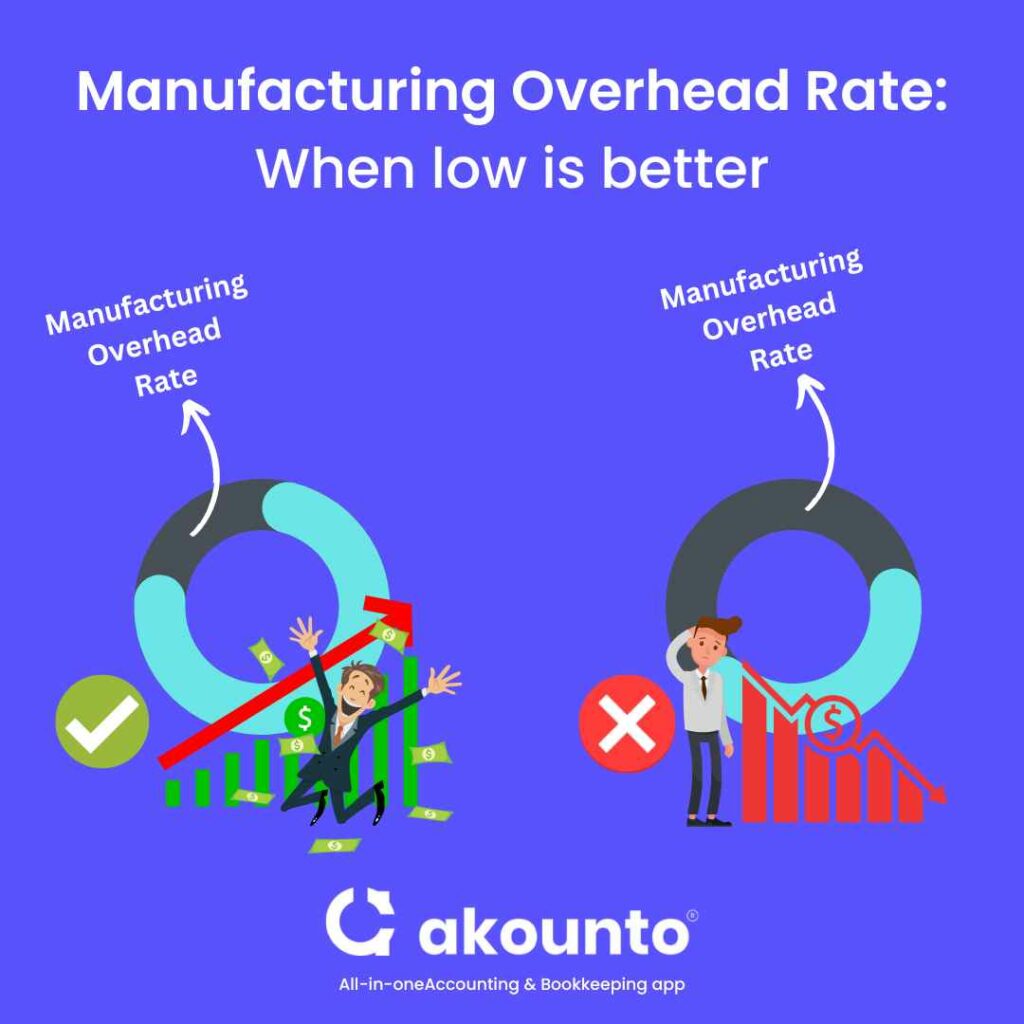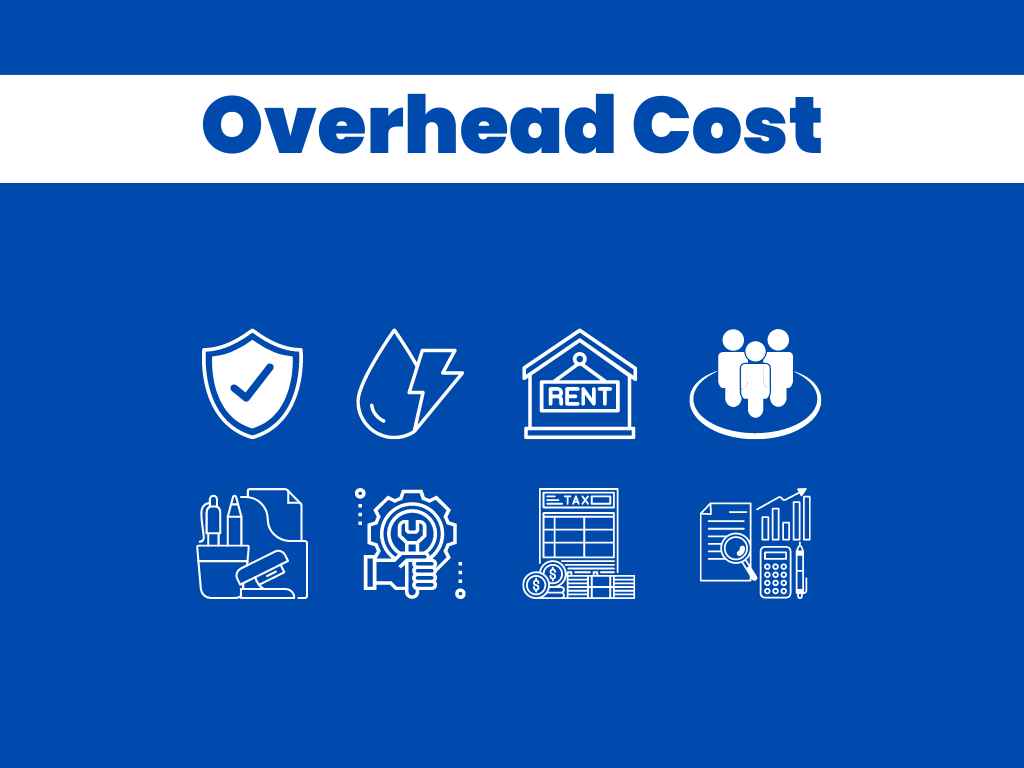What is Manufacturing Overhead?
Manufacturing overhead (MOH) cost refers to a company’s operational costs that incur outside of the cost related to direct materials and labor.
What’s covered in the article
Manufacturing overhead, an indirect cost, can be classified into fixed, variable, and semi-variable overhead costs.
Some examples of manufacturing overhead costs include:
- Salaries of security guards, janitors, and repairmen
- Depreciation of Manufacturing Equipment/Building’s value
- Rent and property taxes
- Audit and legal fees
- Unforeseen repairs or maintenance
- And payment of utilities expenses like electricity, gas, water, and trash services
Manufacturing overhead costs are recorded as expenses and added to the income statement during the accounting period in which they occur.
As per generally accepted accounting principles (GAAP), manufacturing overhead appears in the balance sheet as the cost of work in process (WIP) Inventory and under the cost of finished goods inventory. The overhead cost is recorded as the cost of goods sold (COGS) in the income statement.
In short, manufacturing overhead cost is important for budgeting, setting a price range, and providing a clear view of a business’s expenses while not being directly related to any specific product or service.
What is Included in Manufacturing Overhead?
Since it is difficult to trace overhead costs, a business’s final product or service includes manufacturing overhead based on a predetermined overhead absorption rate.
The overhead absorption rate is manufacturing overhead costs per unit of the activity or cost driver.
The cost driver includes labor costs, labor hours, and machine hours. The following costs are included in manufacturing overhead:

- Indirect labor costs – are costs that the business takes on for employees who are not directly involved in the production process. For example, the salaries of security guards, janitors, repairmen, plant managers, supervisors, quality inspectors, etc., are all indirect costs.
Companies identify indirect labor costs by tracking the number of hours employees worked but were not directly involved in the manufacturing process; from that, the total cost is calculated, and the cost is assigned to each product being manufactured. - Indirect materials costs – are incurred for materials used in manufacturing but not assigned to any specific product. These indirect costs are spread over the entire inventory as it is too difficult to track their usage. For example, the cost of lubrication used to counter friction in the machinery while running is an indirect cost incurred during manufacture.
- Utilities – like natural gas, electricity, water, heating, and waste disposal are indirect costs that fluctuate with the total number of materials produced.The total indirect costs are calculated for the whole facility and then allocated to the entire product inventory.
- Physical costs – include the costs of the property where the manufacturing is taking place, its depreciation, purchase of new machinery and equipment, repair costs, and other similar manufacturing costs. The physical costs are calculated by either the declining balance or the straight-line method. The declining balance method applies a constant depreciation rate to the asset’s book value yearly to calculate the overhead cost. The straight-line depreciation method distributes the remaining fixed asset value evenly across its useful life. Straight-line depreciation is used when there is no particular pattern to the loss of an asset’s value.
- Financial costs – overhead expenses like property taxes, insurance policies, and audit and legal fees are inevitable costs for the business. Financial costs remain constant and don’t frequently change, so they are allocated across the entire product inventory.
What is the Manufacturing Overhead Formula?
The manufacturing overhead cost can be determined as the sum of the entire production process or on a per-unit basis.
- Total manufacturing overhead cost method – Determining the total manufacturing overhead cost includes identifying and summing up all the indirect costs of a manufacturing facility.
- Manufacturing overhead per unit method – Divide the total manufacturing overheads by the total number of units produced.
- Overhead rate method – To get a percentage, divide monthly overhead costs by total monthly sales and multiply it by 100.
Here’s the manufacturing overhead equation:
Manufacturing Overhead Costs / Number of Sales x 100 = Percentage.
If the manufacturing overhead rate is low, it means that the business is utilizing its resources effectively and efficiently. In contrast, a higher rate may indicate a lag in the production process. Determining the manufacturing overhead expenses can help you create a budget for the indirect costs involved. You can then set aside the amount of money needed to cover all the overhead costs.

How to Calculate Manufacturing Overhead Cost?
There are four steps involved in calculating manufacturing overhead.
Step 1: Identify & Calculate all indirect costs
Manufacturing overhead costs are incurred irrespective of whether the goods are directly used for manufacturing. These overhead costs are mostly fixed and occur along with the start of the production unit.
Some of the overhead expenses include rent of the production unit, salaries paid to factory employees and managers, depreciation of equipment, payment of utilities, property tax, and insurance payment for the production unit. A sum of these will result in manufacturing overhead.
Let us look at the example question below for a better understanding.
Example 1: Product JM is prepared and incurred overhead costs. Calculate manufacturing overhead cost based on the information provided by the Product Head.
- Rent of Production Property: $100000
- Depreciation on Plant & Machinery: $50000
- Depreciation on Office Building: $30000
- Property Taxes on Production Unit: $5000
- Salaries of Production Staff: $75000
Solution: We will add all the indirect costs related to expenses = Rent of Production Property + Depreciation on Plant & Machinery + Property Taxes on Production Units + Salaries of Production Staff. => 100000 + 50000 + 5000 + 75000 = 230000
We will not include Depreciation on Office Building as it did not occur indirectly for the production unit.
Step 2: Ascertain which allocation base to use
The overhead percentage rate is calculated by totaling all indirect costs and dividing them by a designated measurement such as total sales, labor costs, machine hours, or even direct labor hours can be used if you have a very labor-intensive job site in contrast to a more automated environment.
Here is a numerical example for your better understanding.
Example 2: Company A’s overhead cost per product is $50, and an employee works two hours to manufacture one such unit. Calculate the allocated manufacturing overhead.
Solution: We will use the Allocated manufacturing overhead formula to find the solution.
Allocated manufacturing overhead = Total overhead costs / Total hours worked or total hours the machine was used
Here total overhead cost per product is $50, and the Total labor hours worked by an employee is two hours to manufacture one such unit. So, the allocated manufacturing overhead would be: 50/2 = $25
Company A will allocate a manufacturing overhead of $25.
Step 3: Find your base totals
If you want to use direct labor hours for your business’s base calculation, you must calculate the total labor hours worked for the month. The same treatment also applies to machine hours.
See the example question below to find out how we can find base totals.
Example 3: Jim works for a servicing company for $15 per hour on vending machines, massage chairs, and claw machines in a mall. He keeps a timesheet to record the appliances he has worked on throughout the week. At the end of the week, his total of the three devices look like this:
- Vending machines: 13 hours
- Claw machines: 16 hours
- Massage chairs: 8 hours
Find out Jim’s weekly direct labor cost and which machines require higher direct labor costs.
Solution: We can do this by the formula:
Direct labor cost for each machine type = number of hours * pay rate
Using the timesheet and the formula, we get the direct labor cost per machine.
- Vending machines: 13 x $15 = $195
- Claw machines: 16 x $15 = $240
- Massage chairs: 8 x $15 = $120
The cost to maintain the claw machines is higher, but if these bring in the most profit, it is worth the expense. Direct labor costs can influence business decisions.
The direct labor cost method can help the business calculate employees’ time spent and determine specific areas to address in decision-making for future growth, purchase, and more.
Step 4: Calculate the overhead rate percentage
Once all indirect expenses are calculated, calculate your overhead rate percentage. Cost allocation is essential for establishing realistic figures for calculating the cost of each unit manufactured.
Example 4: Company B’s total monthly sales were $850,000, and its monthly overhead costs were $400,000. Calculate the overhead rate percentage.
Solution: We will apply the formula
Manufacturing Overhead Costs / Number of Sales x 100 = Percentage.
$400,000 / $850,000 = $0.47
So, for every dollar Company B currently earns in sales, it is spending $0.47 in expenses.
Wrapping Up
Emerging businesses need answers to many questions, from simple ways to calculate overhead costs to sustain themselves in the industry to find ways for value additions for their customers.
Get all the accounting information and more at Akounto. Explore the possibilities of deploying accounting software to unlock your business potential.











